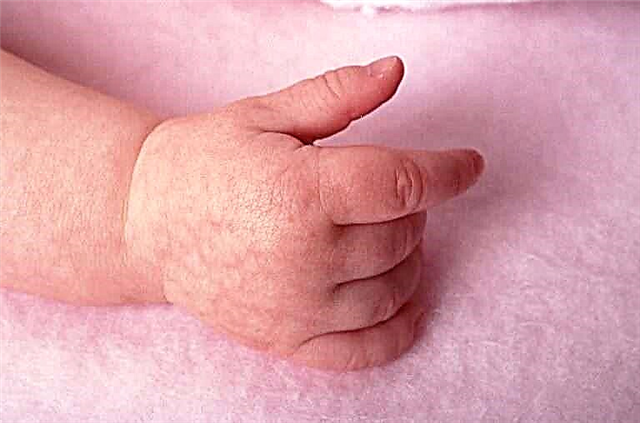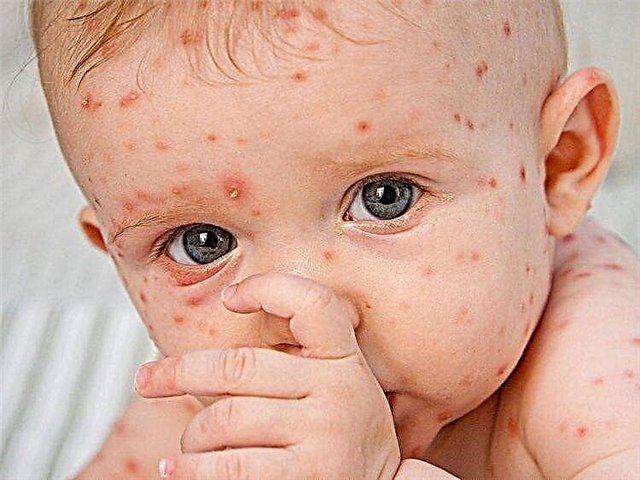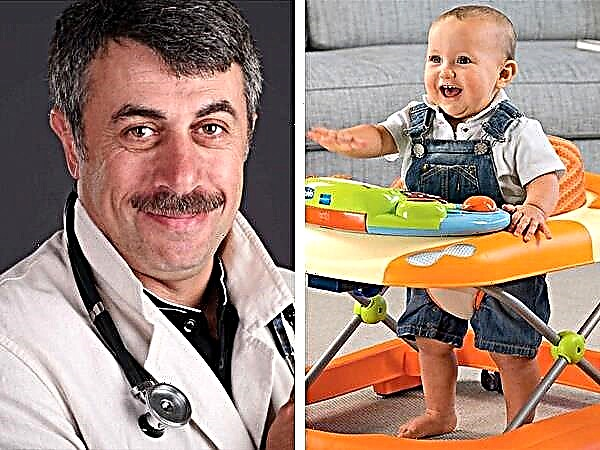Once waking up, the baby may complain of a sore throat. Having measured the temperature, the mother realizes that the numbers are huge, the child begins to complain of pain when swallowing, and when the doctor comes, she diagnoses “follicular tonsillitis”.
What are the parents afraid of with this diagnosis? And what diseases are associated with tonsillitis? Let's find out.
Angina in children, and what it is
Angina is a rather insidious disease. At first glance, it may seem that there is nothing wrong with a red throat. But speaking of streptococcal sore throat, doctors first of all think about complications.

The modern classification divides sore throats into:
- primary;
- secondary.
Primary - these are sore throats, observed with damage to the tonsils, when the causative agent of the disease enters the mucous membrane, passes all protective barriers and begins to multiply in the lacunae.
In 80% of cases, b-hemolytic group A streptococcus becomes the cause of such tonsillitis.
Secondary sore throats are manifested in other infectious diseases, such as infectious mononucleosis, measles, diphtheria. They also accompany such non-infectious diseases as leukemia, agranulocytosis.
There are authors who believe that the term "sore throat" can only denote streptococcal sore throat. In other cases, there should be a diagnosis of tonsillitis.
What is the difficulty of diagnostics?
It seems that there is nothing easier than distinguishing streptococcal sore throat from viral tonsillitis. Streptococcal sore throat, like any other "self-respecting" disease, has more than one form.
There is, for example, the so-called catarrhal form. With her, the temperature rises to 38-39 ˚С, the sore throat is strong, but there are no raids, the children eat poorly, but they do not refuse games. After 2-3 days, either recovery occurs, or a transition to another form is observed. For example, follicular sore throat.

Follicular angina in children is accompanied by a temperature of 39 ° C and above. Children are lethargic, refuse to play and eat, drowsy, there may be vomiting. On examination, the tonsils are enlarged, suppurating follicles (like white dots) are visible on the entire affected surface. The lymph nodes are enlarged, painful. The first 3-4 days, the symptoms increase, the child can get sick up to 10 days.
Lacunar angina downstream is similar to follicular. When viewed on the tonsils, plaque is visible, which can be easily removed with a spatula. But, despite this, the purulent focus is located deeper than with follicular angina.
The main symptoms of streptococcal follicular sore throat
- Sore throat, worse when swallowing.
- No runny nose and cough.
- Lethargy, weakness, drowsiness.
- Enlargement of tonsils and plaque in the form of dots.
- The temperature is over 38 ˚С. As practice shows, it is very difficult to get lost.
- Refusal to eat.
Babies are more sick than teenagers and adults. Children two to three years old are seriously ill with obvious signs of intoxication, high fever.
What can be confused with sore throat?
There is a disease very similar, especially at the beginning, to streptococcal sore throat. This is infectious mononucleosis.

It begins acutely, children become lethargic, sore throat, plaque on the tonsils, enlarged lymph nodes, babies refuse to eat. This disease is especially difficult for young children. In the early days of the disease, there is not always a runny nose, it may appear later.
Usually, with both diseases, the body temperature in the first days of the disease is very high, it is difficult to reduce it. Often the fact of fever terrifies moms.
Do not give in to panic, give antipyretics, monitor the child's condition. But pay attention! If there is a sore throat, but there is no temperature, it is possible that the cause was not streptococcus, but a virus. Not necessarily a mononucleosis virus, it can be an adenovirus or an enterovirus.
In our turbulent times, there may be isolated cases of diphtheria. This disease is serious and rare, but if the child is lethargic and weak, cannot get out of bed, and weakness increases, plaque grows beyond the tonsils, attention should be paid to this.
Diagnosis of the disease
If your child is diagnosed with follicular angina, it will be necessary to pass tests to clarify the diagnosis. This must be done at the very beginning of the disease.
Usually, the appointment of a detailed clinical blood test is enough to remove the question of whether it is a viral disease or a bacterial one.

It is also necessary to take a swab from the tonsils in order to exclude diphtheria.
But now many medical institutions have excluded this analysis from the list of mandatory ones.
Perhaps the doctor will also direct you to donate blood for ASL-O (these are antibodies to streptococcus), most often this test is prescribed at the end of the disease. It is also prescribed in case of complications of streptococcal sore throat.
Regime and diet
Usually sick children are treated at home. It is best if the child is lying down.
But if the baby flatly refuses to lie, invite him to play some quiet games or read a book.
The diet should be high in vegetables and fruits, possibly the consumption of dairy products.
If the child does not want to eat, do not force or simply ask what he wants to eat. Perhaps the child will prefer something else to the soup. Eliminate spicy, salty, smoked foods from the diet.
You need to water the child constantly, even by a sip. This will reduce discomfort in the throat, reduce intoxication, and prevent the child from becoming dehydrated. Remember to keep track of how much your child is peeing.
Follicular sore throat treatment
 Unlike a viral infection, which is not recommended to be treated with antibiotics, streptococcal sore throat is very well treated with them. The simplest and most familiar to all penicillin. If the child is treated at home, then the drug is prescribed in tablets, with a course of 10 days. The tablets should be given at equal time intervals and exactly in the dose prescribed by the doctor.
Unlike a viral infection, which is not recommended to be treated with antibiotics, streptococcal sore throat is very well treated with them. The simplest and most familiar to all penicillin. If the child is treated at home, then the drug is prescribed in tablets, with a course of 10 days. The tablets should be given at equal time intervals and exactly in the dose prescribed by the doctor.
It is advisable to exclude all amateur activities in the treatment of these drugs.
If your child develops a rash while taking antibiotics, you should consult your doctor again.
In addition to the main antibiotic treatment, symptomatic therapy is prescribed. Use various rinsing solutions. If the baby still does not know how to gargle, he is offered to drink water, chamomile broth or tea more often.
Antipyretic drugs are taken to lower fever and relieve pain.
Treatment with folk remedies is possible, but only in combination with the prescribed traditional treatment. And it is very important not to overdo it with traditional medicine, so as not to get burns. Your task is to relieve the child's condition, not torture him.
It must be understood that antibiotics are not prophylactic agents. And they don't cure viral infections. These medications should be prescribed if the doctor is sure that the disease is caused by streptococcus.
Complications of angina
- One of the most common complications is paratonsillar abscess.
This is a purulent inflammation of the paratonsillar tissue. After 5-8 days of illness, a new wave of temperature appears, children complain of sore throat, pain when swallowing. Mothers notice severe drooling, the child tilts his head towards the pain. The child's condition deteriorates sharply. If mom is in doubt, it is better to call a doctor. If the diagnosis is confirmed, the child is admitted to the ENT department at the hospital, where the treatment will continue.
- Retropharyngeal abscess.
It occurs more often in babies up to 4-5 years old.
The child refuses food and water, complains of pain. Difficulty breathing is possible. Since surgical intervention is necessary, these babies are taken to the hospital.
- Rheumatism.
It is an inflammatory autoimmune process that affects the heart, joints, skin and subcutaneous tissue. The acute form of the disease is characterized by an increase in temperature, joint pain (it is also called volatile for inconstancy), the appearance of a rash and subcutaneous nodules. The main danger of this complication is involvement in the heart process. Usually in the acute stage, patients do not complain about it. But if you delay seeking medical help, this can lead to acquired defects and further surgery.
Treatment of rheumatism is carried out by pediatricians and rheumatologists. That is why adequate antibiotic treatment is so important in patients with streptococcal angina. The same is possible early prevention of rheumatic attacks with a penicillin antibiotic.
Prevention
There is no vaccine, which means that you can protect yourself with regime measures - excluding contact with a sick person. It must be remembered that the disease is transmitted not only by airborne droplets, but also by household contact. This means that you should not eat from the dishes of an ailing family member, have common hygiene items with him.
For the rest, these are the usual preventive measures - hardening, walking, adherence to the daily regimen. General hypothermia should be avoided on walks and at home.
Each of us was sick with angina. Many people remember how unpleasant it is. But treating complications is doubly unpleasant. For this reason, do not delay treatment and a visit to the doctor, do not be afraid of antibiotics, take them as prescribed.



